Quarz
Cuarţ, Cuarzo, Křemen, Kuarsa, Kuarza, Kuvars, Kvarc, Kvarcas, Kvarcs, Kvarts, Kvartsi, Kwarc,
Kwarts, Quartz, Quartzo, Quarzo,
Thạch anh,
مرو, Χαλαζίας, 石英, 석영,
Кварц, ควอตซ์
Name: Vom altslawischen Wort "kwardy" (hart)
Allgemein bekannt
seltener (sogenannte Sammlersteine)
ganz selten (Raritäten)
relativ seltenes organisches Material
⇐ Intro Seite ⇐ Edelsteine
|
Chemische Formel Achat: SiO2
Achát, Agaat, Agat, Agata, Ágata, Agatas, Agate, Ahat, Ahāts, Ahhaat, Akaatti, Akik, Агат, 瑪瑙, メノウ, אגט, العقيق, โมรา Mineralklasse: Oxide Kristallsystem: trigonal Mohs-Härte: 6,5 - 7 Dichte (g/cm3): 2,6 - 2,65 Refraktions-Index: 1,530 - 1,540 Spaltbarkeit: schlecht Farben: Achate haben von Natur aus unscheinbare Farben. Durch Färben mit anorganischen Farbstoffen bzw. Chemikalien erhalten die Rohsteine ihre attraktiven Farben: Rot: Einlegen in Eisennitrat-Lösung und anschließendes Erhitzen. Gelb: Einlegen in Salzsäure und anschließendes Erhitzen Schwarz: Einlegen in Zuckerlösung und anschließende Schwefelsäure-Behandlung Grün: Einlegen in Chromsalze oder Nickelnitrat und anschließendes Erhitzen Blau: Einlegen in gelbes Blutlaugensalz, anschließendes Erhitzen in Eisensulfat Glanz: Glasglanz Fluoreszenz: unterschiedlich, je nach Bänderung Pleochroismus: - Größte Achate: einige Zentner Fundorte: Australien, Brasilien, Uruguay, Deutschland, China, Indien, Madagaskar, Mexiko, USA Name: vom alten Namen "Achates" des Dirillo-Flusses auf Sizilien / Italien |
|
Achat Mineral
Herkunft: Waldhambach / Rheinland-Pfalz / Deutschland Foto mit freundlicher Erlaubnis von © www.mineralroli.de |
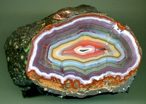 |
 |
|
Achat Mineral
Herkunft: Rancho Coyamito / Ricardo Flores Magón / Chihuahua / Mexiko Foto mit freundlicher Erlaubnis von © www.achate.at |
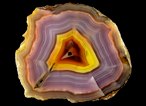 |
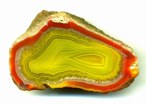 |
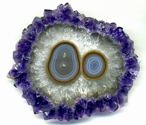 |
|
Achat Mineral
Herkunft: Rancho Aparejos / Ricardo Flores Magón / Chihuahua / Mexiko Foto mit freundlicher Erlaubnis von © www.achate.at |
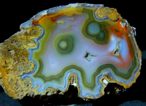 |
|
Achat Mineral
Herkunft: Janos / Chihuahua / Mexiko Foto mit freundlicher Erlaubnis von © www.achate.at |
 |
|
Achat Mineral
Herkunft: Lausitz / Sachsen / Deutschland Foto mit freundlicher Erlaubnis von © www.mineralroli.de |
 |
|
Achat Mineral
Größe: 6,5 x 4,2 x 1,6 cm Herkunft: Gyöngyöstarján / Ungarn Foto mit freundlicher Erlaubnis von © www.mineraltivadar.hu |
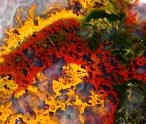 |
|
Achat Mineral
Herkunft: Rheingebiet / Deutschland Foto mit freundlicher Erlaubnis von © www.achate.at |
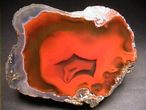 |
|
Achat Mineral
Größe: 6,8 x 4,8 x 2,4 cm Herkunft: Gyöngyöstarján / Ungarn Foto mit freundlicher Erlaubnis von © www.mineraltivadar.hu |
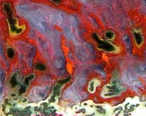 |
|
Achat Mineral
Herkunft: Burn Anne / Schottland / Großbritannien Foto mit freundlicher Erlaubnis von © www.achate.at |
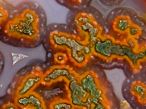 |
|
Achat Mineral
Größe: 7,0 x 5,2 x 2,1 cm Herkunft: Gyöngyöstarján / Ungarn Foto mit freundlicher Erlaubnis von © www.mineraltivadar.hu |
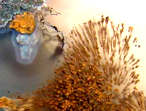 |
|
Achat Mineral
Größe: 9 x 8 cm Herkunft: Eckenfels / Oppenau / Lierbachtal / Schwarzwald / Deutschland Foto mit freundlicher Erlaubnis von © www.achate-schwarzwald.de |
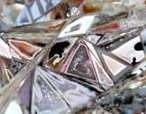 |
|
Achat "Feuerachat" Mineral
Größe: 1,37 x 1,18 x 0,81 cm Gewicht: 9,70 ct Herkunft: Mexiko Foto mit freundlicher Erlaubnis von © www.palagems.com |
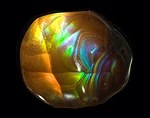 |
|
Achat "Feuerachat"
Größe: 2,78 x 1,1 cm Gewicht: 9,24 ct Herkunft: Slaughter Mt. / San Carlos Res. / Arizona / USA Foto mit freundlicher Erlaubnis von © http://www.thegemtrader.com |
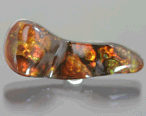 |
|
Achat "Feuerachat"
Größe: 1,39 x 1,06 cm Gewicht: 5,79 ct Herkunft: Mexiko Foto mit freundlicher Erlaubnis von © www.thegemtrader.com |
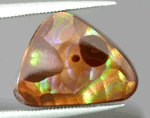 |
|
Achat "Feuerachat"
Größe: 1,1 x 0,8 x 0,2 cm Gewicht: 1,76 ct Herkunft: Calvillo / Aguascalientes / Mexiko Foto mit freundlicher Erlaubnis von © www.lucianabarbosa.com |
 |
|
Achat "Feuerachat"
Größe: 1,93 x 1,02 x 0,71 cm Gewicht: 10,05 ct Herkunft: Mexiko Foto mit freundlicher Erlaubnis von © www.starruby.in |
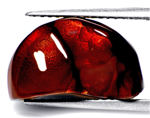 |
|
Achat
Größe: 2,2 x 1,9 x 1,0 cm Herkunft: Botswana Foto mit freundlicher Erlaubnis von © www.lucianabarbosa.com |
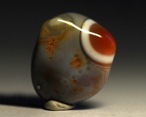 |
|
Achat
Größe: 5,5 x 4,5 cm Herkunft: Montana / USA Foto mit freundlicher Erlaubnis von © www.edelsteine.at |
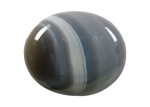 |
|
Achat Mineral KW-UV
Größe: 2,1 x 2,0 x 0,7 cm Gewicht: 15,5 ct Herkunft: Montana / USA Foto mit freundlicher Erlaubnis von © www.bestminerals.com |
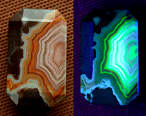 |
|
Achat Skulptur (Paar)
Größe (Paar): 4,25 x 3,65 x 0,35 cm Gewicht (Paar): 33,55 ct Herkunft: Indonesien Foto mit freundlicher Erlaubnis von © www.multicolour.com |
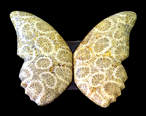 |
|
Landschafts-Achate
Größe: 2,0 x 1,5 cm Gewicht: 16,15 ct Herkunft der Steine: Brasilien Foto mit freundlicher Erlaubnis von © www.gemfrance.com |
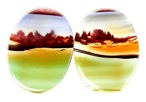 |
|
Landschafts-Achat Anhänger
Größe: 2,6 x 1,94 cm, 750/000 Gold Gewicht: 9,11 g Herkunft des Steines: Brasilien Foto mit freundlicher Erlaubnis von © www.gemfrance.com |
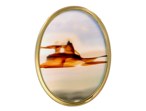 |
|
Landschafts-Achat
Größe: 5,5 x 4,3 x 0,5 cm Herkunft: Paulina Ridge / Oregon / USA Foto mit freundlicher Erlaubnis von © www.lucianabarbosa.com |
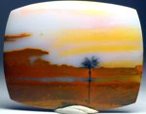 |
|
Landschafts-Achat
Größe: 1,6 x 1,3 x 0,4 cm Gewicht: 7,70 ct Herkunft: Yellowstone River / Montana / USA Foto mit freundlicher Erlaubnis von © www.lucianabarbosa.com |
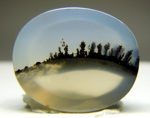 |
|
Achat Skulptur (Drachen)
Größe: 25,1 x 20,9 x 5,2 cm Herkunft: China Foto mit freundlicher Erlaubnis von © www.irocks.com |
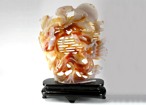 |
|
Achat Kamee
Kamee blauer Achat Gold: 14K Gelbgold Foto mit freundlicher Erlaubnis von © www.portraitcameos.com |
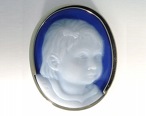 |
|
Achat Ring mit peruanischem Opal
Gewicht: 10,50 g Diamanten: 44, total 0,25 ct Gold: 18K Weißgold Foto mit freundlicher Erlaubnis von © Chrisgo-CG-Design |
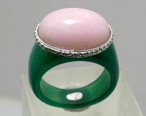 |
⇐ Intro Seite ⇐ Edelsteine
|
Chemische Formel Amethyst: SiO2
Amatista, Amethist, Améthyste, Ametista, Ametistas, Ametisti, Ametists, Ametiszt, Ametüst, Ametyst, Аметист, 紫水晶, アメシスト, เขี้ยวหนุมาน, Αμέθυστος, אחלמה, ამეთვისტო Mineralklasse: Oxide Kristallsystem: trigonal Mohs-Härte: 7 Dichte (g/cm3): 2,63 - 2,65 Refraktions-Index: 1,543 - 1,554 Farben: violett Fluoreszenz: schwach grünlich Pleochroismus: schwach violett - grauviolett Größter Amethyst: ? Fundorte: weltweit Name: von den griechischen Wörtern "a -" (nicht) und "methystos" (berauschend) |
|
Amethyst Mineral
Herkunft: Hubei Prov. / China Foto mit freundlicher Erlaubnis von © www.treasuremountainmining.com |
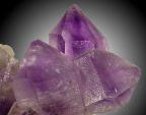 |
|
Amethyst
Gewicht: 22,71 ct Herkunft: Zambia Foto mit freundlicher Erlaubnis von © www.multicolour.com |
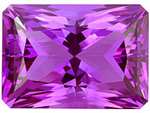 |
|
Amethyst Ring
Amethyst: 3,5 ct, 1,1 x 0,9 cm Sonstige Steine: Diamanten: 40, total 0,3 ct; Rubine: 2, total 0,04 ct Gold: 18K Weißgold Foto mit freundlicher Erlaubnis von © www.davidwein.com |
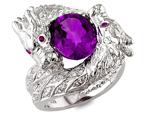 |
|
Amethyst
Gewicht: 4,67 ct Herkunft: Zambia Foto mit freundlicher Erlaubnis von © www.multicolour.com |
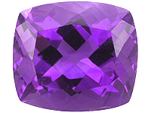 |
|
Amethyst Ring
Amethyst: 24,81 ct, 2,11 x 1,61 cm Diamanten: 54, total 0,62 ct Gold: 18K, 14,62 g Foto mit freundlicher Erlaubnis von © www.davidwein.com |
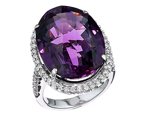 |
|
Amethyst Mineral
Größe: 10,8 x 8,1 x 5,0 cm Herkunft: Uruguay Foto mit freundlicher Erlaubnis von © www.aarockshop.com |
 |
|
Amethyst
Gewicht: 14,84 ct Herkunft: Uruguay Foto mit freundlicher Erlaubnis von © www.gemfrance.com |
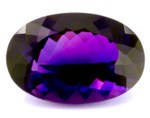 |
|
Amethyst
Gewicht: 30,21 ct Herkunft: Hpa-An / Myanmar Foto mit freundlicher Erlaubnis von © www.americanthai.com |
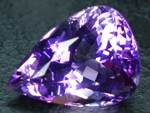 |
|
Amethyst "Rose de France"
Größe: 1,6 x 1,6 x 0,78 cm Gewicht: 10,25 ct Herkunft: Brasilien Foto mit freundlicher Erlaubnis von © www.edelsteine.at |
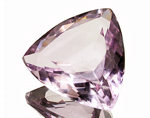 |
|
Amethyst Ring
Amethyst: 6,0 ct, 1,40 x 0,90 cm Diamanten: 48, total 0,47 ct Gold: 14K Rotgold Foto mit freundlicher Erlaubnis von © www.africagems.com |
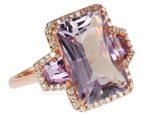 |
|
Amethyst Brosche
Diamanten: 4; total 0,10 ct Gold: 14K Gelbgold, 20,8 g Foto mit freundlicher Erlaubnis von © Chrisgo-CG-Design |
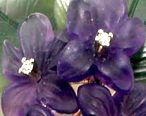 |
|
Amethyst Ring
Amethyst: 11,0 ct; 1,80 x 1,30 cm; Brasilien Diamanten: 36; total 0,20 ct Gold: 14K Weißgold Foto mit freundlicher Erlaubnis von © www.africagems.com |
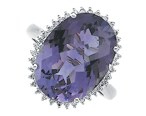 |
|
Amethyst zweifarbig Mineral
Größe: 5,2 x 0,5 x 0,5 cm Herkunft: Brandberg Distr. / Erongo Region / Namibia Foto mit freundlicher Erlaubnis von © www.irocks.com |
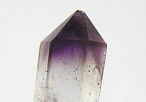 |
|
Amethyst zweifarbig Mineral Anhänger
Material: Gold Größe: 3,3 x 1,5 x 1 cm Herkunft: Umba Tal / Tansania Foto mit freundlicher Erlaubnis von © www.wolfpiontek.de |
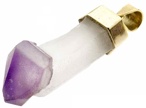 |
|
Amethyst zweifarbig Ring
Amethyst: 9,61 ct, 1,35 x 1,10 cm, Brasilien Diamanten: 65, total 0,96 ct Gold: 18K Weißgold Foto mit freundlicher Erlaubnis von © www.africagems.com |
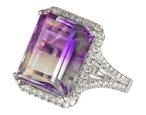 |
|
Amethyst zweifarbig
Größe: 1,9 x 1,3 x 0,4 cm Gewicht: 10,20 ct Herkunft: Espirito Santo / Brasilien Foto mit freundlicher Erlaubnis von © www.lucianabarbosa.com |
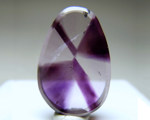 |
|
Amethyst zweifarbig
Größe: 1,79 x 1,29 cm Gewicht: 14,46 ct Herkunft: Brasilien Foto mit freundlicher Erlaubnis von © www.ridderborg.se |
 |
⇐ Intro Seite ⇐ Edelsteine
|
Chemische Formel Ametrin: SiO2
Ametrinas, Amétrine, Ametrine, Ametrino, Ametrīns, Ametryn, 紫黃晶, 双色水晶 (又名紫黄晶), อเมทริน Mineralklasse: Oxide Kristallsystem: Trigonal Mohs-Härte: 7 Dichte (g/cm3): 2,66 Refraktions-Index: 1,544 - 1,553 Farben: gelb, orange / violett, rosa Größter geschliffener Edelstein: mindestens 202 ct Fundorte (Quelle: www.mindat.org): Anahí-Mine / La Gaiba Distrikt / Sandoval Provinz / Santa Cruz / Bolivien Minas Gerais / Südost Region / Brasilien Ontario Edelstein-Mine / Pearl Station / Thunder Bay Distrikt / Ontario / Kanada Hyderabad Distrikt / Andhra Pradesh / Indien Name: eine Kombination aus "Amethyst" und "Citrin" |
|
Ametrin Mineral
Größe: 6,4 x 4,8 x 1,6 cm Herkunft: Anahi Mine / Santa Cruz / Bolivien Foto mit freundlicher Erlaubnis von © www.lucianabarbosa.com |
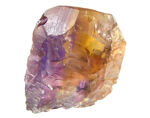 |
|
Ametrin
Gewicht: 27,23 ct Herkunft: Bolivien Foto mit freundlicher Erlaubnis von © www.multicolour.com |
 |
|
Ametrin Skulptur
Größe: 3,0 x 2,7 x 1,2 cm Herkunft: Anahi Mine / Santa Cruz / Bolivien Foto mit freundlicher Erlaubnis von © www.lucianabarbosa.com |
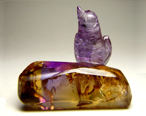 |
|
Chemische Formel Aventurinquarz: SiO2
Aventurien, Avantiurinas, Avanturīns, Aventuriini, Aventurina, Aventurine, 色東菱石, אוונטורין Mineralklasse: Oxide Kristallsystem: trigonal Mohs-Härte: 7 Dichte (g/cm3): 2,65 Refraktions-Index: 1,544 - 1,563 Farben: grün, goldbraun Fluoreszenz: rötlich Pleochroismus: - Größter Aventurinquarz: ? Fundorte: Indien, Brasilien, Russland Name: von den italienischen Wörtern "a ventura" (zufällig) |
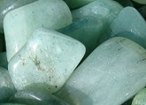 |
|
Aventurin
Gewicht: 42,03 ct Herkunft: Brasilien Foto mit freundlicher Erlaubnis von © www.online-edelstein.de |
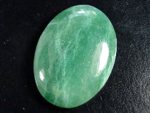 |
|
Chemische Formel Bergkristall: SiO2
Bergkristal, Cristal de roca, Cristal de rocha, Kalnu kristāl, Kryształ górski, Rock crystal, Горный хрусталь, 白水晶 Mineralklasse: Oxide Kristallsystem: trigonal Mohs-Härte: 7 Dichte (g/cm3): 2,65 Refraktions-Index: 1,543 - 1,554 Farben: farblos Fluoreszenz: - Pleochroismus: - Größter Bergkristall: ? Fundorte: weltweit |
|
Bergkristall Mineral
Herkunft: Hot Springs / Arkansas / USA Foto mit freundlicher Erlaubnis von © www.treasuremountainmining.com |
 |
|
Bergkristall
Gewicht: 405,00 ct Herkunft: Ron Coleman's Quarz Mine / Hot Springs / Arkansas / USA Foto mit freundlicher Erlaubnis von © www.treasuremountainmining.com |
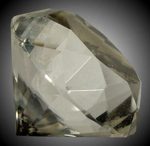 |
|
Bergkristall
Größe: 1,74 x 1,74 x 1,44 cm Gewicht: 23,41 ct Herkunft: Brasilien Foto mit freundlicher Erlaubnis von © www.djraregems.com |
 |
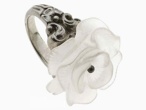 |
|
Chemische Formel Binghamit: SiO2
Faseriger Chalcedon mit Hämatit, gelbem Goethit und Blaueisenstein.
Binghamita, Binghamite Mineralklasse: Oxide Kristallsystem: trigonal Mohs-Härte: 6,5 - 7 Dichte (g/cm3): Refraktions-Index: 1,564 - 1,660 Spaltbarkeit: Farben: goldgelb, rot, braun Glanz: Glasglanz Fluoreszenz: - Pleochroismus: - Größter Binghamit: ? Fundorte: Cuyuna North Range / Crow Wing County / Minnesota / USA Entdeckung: 1936 Name: zu Ehren von Bill Bingham, der das Mineral 1936 entdeckt hat |
|
Binghamit Mineral
Herkunft: Cuyuna Iron Range / Crosby / Crow Wing County / Minnesota / USA Foto mit freundlicher Erlaubnis von © www.cs.cmu.edu/ |
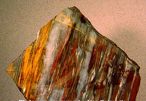 |
⇐ Intro Seite ⇐ Edelsteine
|
Chemische Formel Chalcedon: SiO2
Calcédoine, Calcedonia, Calcedônia, Calcedonio, Chalcedón, Chalcedonas, Chalcedoon, Chalcedony, Halcedons, Kalcedon, Kalsedon, Kalsedoni, Kaltsedon, Халцедон, 玉髓, カルセドニー, 옥수, כלקדון Mineralklasse: Oxide Kristallsystem: trigonal Mohs-Härte: 6,5 - 7 Dichte (g/cm3): 2,58 - 2,64 Refraktions-Index: 1,564 - 1,660 Farben: weißlich, gelblich, orange, rötlich, bläulich, violett Fluoreszenz: bläulich Pleochroismus: - Größter Chalcedon: ? Fundorte: Brasilien, Uruguay, Indien, Madagaskar, Namibia Name: von der antiken griechischen Stadt "Chalkedon" |
|
Chalcedon Mineral
Größe: 5,6 x 4,4 cm Herkunft: Ungarn Foto mit freundlicher Erlaubnis von © www.mineraltivadar.hu |
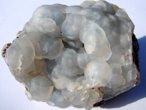 |
|
Chalcedon Mineral
Größe: 7,3 x 3,9 x 3 cm Herkunft: Blinkpan / Karas Reg. / Namibia Foto mit freundlicher Erlaubnis von © www.irocks.com |
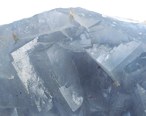 |
|
Chalcedon
Größe: 1,05 x 1,05 x 0,7 cm Gewicht: 3,45 ct Herkunft: Namibia Foto mit freundlicher Erlaubnis von © JewelsRoughGems |
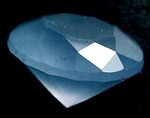 |
|
Chalcedon "Paraiba-Chalcedon"
Größe: 0,6 cm Gewicht: 0,70 ct Herkunft: Brasilien Foto mit freundlicher Erlaubnis von © www.irocks.com |
 |
|
Chalcedon Mineral
Größe: 6,9 x 4,6 cm Herkunft: Rumänien Foto mit freundlicher Erlaubnis von © www.mineraltivadar.hu |
 |
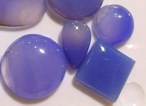 |
|
Chalcedon
Gewicht: total 38,10 ct Herkunft: Malawi Foto mit freundlicher Erlaubnis von © www.edelsteine.at |
 |
|
Chalcedon Mineral
Größe: 8,6 x 7,1 cm Herkunft: Ungarn Foto mit freundlicher Erlaubnis von © www.mineraltivadar.hu |
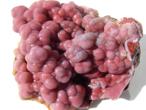 |
|
Chalcedon
Gewicht: 12,52 ct Herkunft: Afrika Foto mit freundlicher Erlaubnis von © www.multicolour.com |
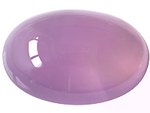 |
|
Chalcedon
Größe: 1,23 x 1,23 x 0,64 cm Gewicht: 7,01 ct Herkunft: Afrika Foto mit freundlicher Erlaubnis von © www.multicolour.com |
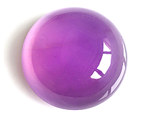 |
|
Chalcedon Ring
Chalcedon: 15,22 ct, 2,70 x 1,30 cm, Indien Gold: 18K Gelbgold Foto mit freundlicher Erlaubnis von © www.africagems.com |
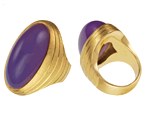 |
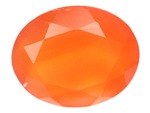 |
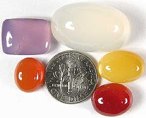 |
|
Chalcedon Var. Mtorodit (Chrom-Chalcedon)
Größe: 1,21 x 1,21 cm Gewicht: 5,53 ct Herkunft: Brasilien Foto mit freundlicher Erlaubnis von © www.irocks.com |
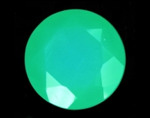 |
|
Chalcedon Var. Mtorodit (Chrom-Chalcedon)
Gewicht: 1,06 ct Herkunft: Mtoroshanga / Mashonaland West / Zimbabwe Foto mit freundlicher Erlaubnis von © www.gemfrance.com |
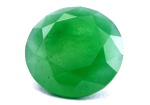 |
|
Chemische Formel Chrysopras: SiO2
Chrysopraas, Chrysoprase, Chryzopraz, Crisoprasa, Crisoprase, Crisoprasio, Krizopras, Krysopras, Prazems, Хризопраз, クリソプレーズ, 绿玉髓, כריזופראס Mineralklasse: Oxide Kristallsystem: trigonal Mohs-Härte: 6,5 - 7 Dichte (g/cm3): 2,58 - 2,64 Refraktions-Index: 1,530 - 1,540 Farben: grün Fluoreszenz: - Pleochroismus: - Größter Chrysopras: ? Fundorte: Polen, Australien, Brasilien, Indien, Madagaskar, Südafrika, Russland, USA Name: eine Kombination der griechischen Wörter "chrysos" (Gold) und "prason" (Lauch) |
|
Chrysopras Mineral
Größe: 9,7 x 5,7 cm Herkunft: Polen Foto mit freundlicher Erlaubnis von © www.mineraltivadar.hu |
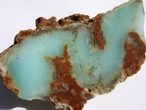 |
|
Chrysopras Mineral
Größe: 2,1 x 1,6 x 1,4 cm Herkunft: Australien Foto mit freundlicher Erlaubnis von © Darlene Cobler |
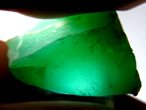 |
|
Chrysopras
Größe: 0,89 x 0,69 cm Gewicht: 1,29 ct Herkunft: Australien Foto mit freundlicher Erlaubnis von © www.irocks.com |
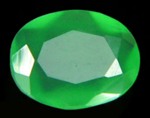 |
|
Chrysopras Mineral
Größe: 12 x 7 cm Herkunft: Mount Hay / Queensland / Australien Foto mit freundlicher Erlaubnis von © www.douglassminerals.com |
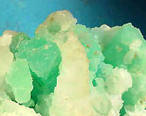 |
|
Chrysopras
Größe: 0,41 cm Gewicht: 0,17 ct Herkunft: Australien Foto mit freundlicher Erlaubnis von © www.irocks.com |
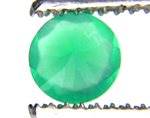 |
|
Chrysopras
Größe: 1,62 x 0,88 cm Gewicht: 3,73 ct Herkunft: Brasilien Foto mit freundlicher Erlaubnis von © www.thegemtrader.com |
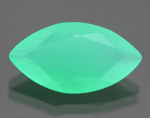 |
|
Chrysopras
Gewicht: 26,32 ct Herkunft: Tansania Foto mit freundlicher Erlaubnis von © www.multicolour.com |
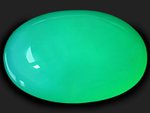 |
|
Chrysopras Mineral
Herkunft: Marlborough Mine / Queensland / Australien Foto mit freundlicher Erlaubnis von © www.cs.cmu.edu/~adg/adg-piimages.html |
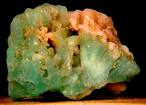 |
|
Chrysopras
Gewicht: 0,60 ct Herkunft: Mantena / Minas Gerais / Brasilien Foto mit freundlicher Erlaubnis von © http://lucianabarbosa.com |
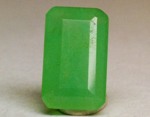 |
|
Chrysopras Mineral
Herkunft: Yerilla Mine / West-Australien / Australien Foto mit freundlicher Erlaubnis von © www.TreasureMountainMining.com |
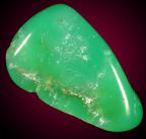 |
|
Chrysopras
Größe: 21,6 x 8,1 mm Herkunft: Australien Foto mit freundlicher Erlaubnis von © www.edelsteine.at |
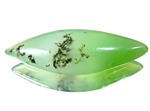 |
|
Chrysopras
Größe: 14,6 x 7,1 mm Herkunft: Australien Foto mit freundlicher Erlaubnis von © www.edelsteine.at |
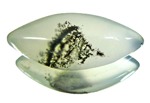 |
|
Chrysopras Skulptur
Größe: 3,0 x 2,3 x 1,5 cm Herkunft: Queensland / Australien Foto mit freundlicher Erlaubnis von © www.steveperrygems.com |
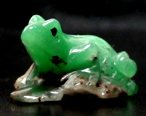 |
⇐ Intro Seite ⇐ Edelsteine
|
Chemische Formel Citrin: SiO2
Citrien, Citrinas, Citrine, Citrino, Cuarzo citrino, Cytryn, Sitriini, Sitrin, Цитрин, 黃水晶, סיטרין, シトリン Mineralklasse: Oxide Kristallsystem: trigonal Mohs-Härte: 7 Dichte (g/cm3): 2,65 Refraktions-Index: 1,543 - 1,554 Farben: hellgelb - goldbraun Fluoreszenz: - Pleochroismus: schwach: hellgelb - gelb, gebrannte Citrine: - Größter facettierter Citrin: 20.200 ct ("Malaga" Citrin) Fundorte: Brasilien, Madagaskar, USA, Spanien, Russland, Frankreich, Schottland Name: vom lateinischen Wort "citrus" (Zitrone / Citrus limon) |
|
Citrin
Größe: 2,02 x 1,64 x 1,29 cm Gewicht: 24,82 ct Herkunft: Brasilien Foto mit freundlicher Erlaubnis von © www.ajsgem.com |
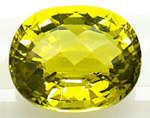 |
|
Citrin
Größe: 3,75 x 3,75 x 2,40 cm Gewicht: 148,83 ct Herkunft: Brasilien Foto mit freundlicher Erlaubnis von © www.ajsgem.com |
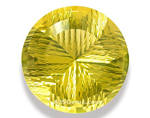 |
|
Citrin
Gewicht: 37,52 ct Herkunft: Brasilien Foto mit freundlicher Erlaubnis von © www.online-edelstein.de |
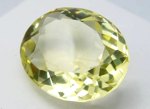 |
|
Citrin Mineral
Herkunft: Olkhovka / Ural Gebirge / Russland Foto mit freundlicher Erlaubnis von © www.irocks.com |
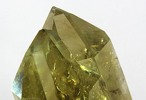 |
|
Citrin
Gewicht: 22,37 ct Herkunft: Tansania Foto mit freundlicher Erlaubnis von © www.djraregems.com |
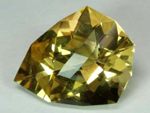 |
|
Citrin Mineral
Herkunft: Minas Gerais / Brasilien Foto mit freundlicher Erlaubnis von © www.TreasureMountainMining.com |
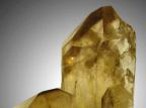 |
|
Citrin
Gewicht: 7,20 ct Herkunft: Bolivien Foto mit freundlicher Erlaubnis von © www.multicolour.com |
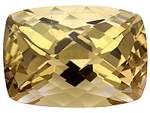 |
|
Citrin Ring
Citrin: 7,0 ct, 1,2 x 1,2 cm Diamanten: 36, total 0,66 ct Gold: 14K Weißgold Foto mit freundlicher Erlaubnis von © www.africagems.com |
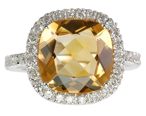 |
|
Citrin Ring
Citrin: 5,4 ct; 1,20 x 1,00 cm; Brasilien Diamanten: 16, total 0,08 ct Gold: 14K Gelbgold Foto mit freundlicher Erlaubnis von © www.africagems.com |
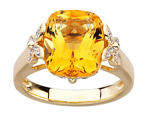 |
|
Citrin Mineral
Herkunft: Polar Ural Gebirge / Russland Foto mit freundlicher Erlaubnis von © www.irocks.com |
 |
|
Citrin
Gewicht: 5,81 ct Herkunft: Brasilien Foto mit freundlicher Erlaubnis von © www.online-edelstein.de |
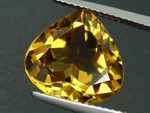 |
|
Citrin Mineral
Größe: 16,51 x 8,64 x 5,59 cm Herkunft: Sierra do Cabral / Santa Clara / Minas Gerais / Brasilien Foto mit freundlicher Erlaubnis von © www.treasuremountainmining.com |
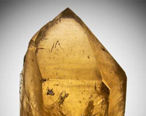 |
|
Citrin
Größe: 1,38 x 1,19 x 0,8 cm Gewicht: 10,08 ct Herkunft: Brasilien Foto mit freundlicher Erlaubnis von © www.gemfrance.com |
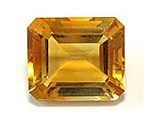 |
|
Citrin Ring
Citrin: 6,70 ct, 1,40 x 1,20 cm, Brasilien Diamanten: 40, total 0,45 ct Gold: 18K Weißgold Foto mit freundlicher Erlaubnis von © www.africagems.com |
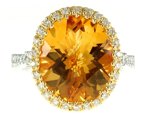 |
|
Citrin Mineral
Größe: 18,8 x 12,7 x 9,14 cm Herkunft: Sao Geraldo do Baixo / Minas Gerais / Brasilien Foto mit freundlicher Erlaubnis von © www.treasuremountainmining.com |
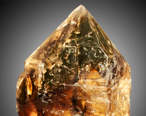 |
 |
|
Citrin Mineral
Gewicht: 39,91 ct Herkunft: Uruguay Foto mit freundlicher Erlaubnis von © www.wsfgems.com |
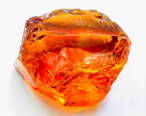 |
|
Citrin
Größe: 1,63 x 1,63 cm Gewicht: 14,10 ct Foto mit freundlicher Erlaubnis von © www.wsfgems.com |
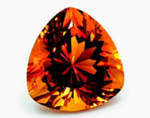 |
|
Citrin
Größe: 1,11 x 0,9 cm Gewicht: 3,49 ct Herkunft: Brasilien Foto mit freundlicher Erlaubnis von © www.irocks.com |
 |
|
Citrin Ring
Citrin: 2,11 ct; 0,9 x 0,7 cm Diamanten: 59, total 0,32 ct Gold: 14K Gelbgold Foto mit freundlicher Erlaubnis von © www.africagems.com |
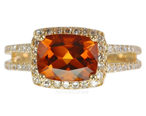 |
|
Citrin Ring
Citrin: 5,25 ct; 1,20 x 1,00 cm; Brasilien Diamanten: 2, total 0,15 ct Gold: 14K Gelbgold Foto mit freundlicher Erlaubnis von © www.africagems.com |
 |
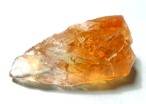 |
|
Citrin Katzenauge
Größe: 2,40 x 2,40 x 1,64 cm Gewicht: 63,63 ct Herkunft: Brasilien Foto mit freundlicher Erlaubnis von © www.ajsgem.com |
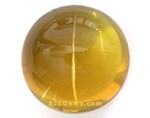 |
|
Dendritenquarz
Größe: 2 x 1,45 cm Gewicht: 17,01 ct Herkunft: Brasilien Foto mit freundlicher Erlaubnis von © www.irocks.com |
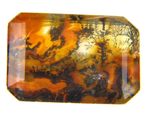 |
|
Dendritenquarz
Größe: 2,01 x 1,52 cm Gewicht: 13,63 ct Herkunft: Brasilien Foto mit freundlicher Erlaubnis von © www.irocks.com |
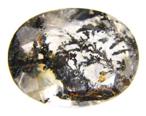 |
|
Dendritenquarz
Größe: 2,5 x 1,4 x 0,5 cm Gewicht: 14,80 ct Herkunft: Galileia / Minas Gerais / Brasilien Foto mit freundlicher Erlaubnis von © www.lucianabarbosa.com |
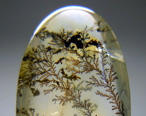 |
⇐ Intro Seite ⇐ Edelsteine
|
Chemische Formel Heliotrop: SiO2
Heliotroop, Heliotrope, Heliotropo, הליוטרופ, 血玉髓 (又称鸡血石), ブラッドストーン Mineralklasse: Oxide Kristallsystem: trigonal Mohs-Härte: 6,5 - 7 Dichte (g/cm3): 2,59 - 2,65 Refraktions-Index: 1,543 - 1,554 Farben: grün mit roten Flecken Fluoreszenz: - Pleochroismus: - Größter Heliotrop: ? Fundorte: Österreich (Tirol), Tschechische Republik (Riesengebirge), Russland (Ural), China, Indien, Australien, Brasilien, USA Name: von den griechischen Wörtern "helios" (Sonne) und "tropos" (Drehung) |
 |
|
Heliotrop
Maße: 13,5 x 10,9 mm Herkunft: Deutschland Foto mit freundlicher Erlaubnis von © www.edelsteine.at |
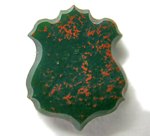 |
|
Heliotrop Anhänger
Heliotrop: 25 g; 4,4 x 3,6 cm Silber: 925/1000 Foto mit freundlicher Erlaubnis von © www.stonemania.co.uk |
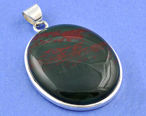 |
|
Jaspis siehe die
Spezialseite
|
|
Formel Karneol: SiO2
Carnelian, Cornaline, 紅瑪瑙 Varietät von: Chalcedon Mineralklasse: Oxide Kristallsystem: trigonal Mohs-Härte: 6,5 - 7 Dichte (g/cm3): 2,58 - 2,64 Refraktions-Index: 1,53 - 1,54 Farben: rot, orange, gelblich, bräunlich Fluoreszenz: ? Pleochroismus: - Größter Karneol: ? Fundorte: weltweit Name: vom mittelalterlichen, lateinischen Wort "corneolus" |
|
Karneol
Gewicht: 7,96 ct Herkunft: Balangoda / Sri Lanka Foto mit freundlicher Erlaubnis von © www.wildfishgems.com |
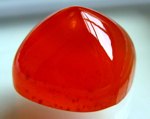 |
|
Karneol
Gewicht: 48,06 ct Herkunft: Indien Foto mit freundlicher Erlaubnis von © www.online-edelstein.de |
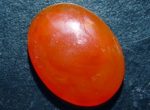 |
|
Karneol
Größe: 1,49 x 1,14 cm Gewicht: 5,30 ct Herkunft: Mozambique Foto mit freundlicher Erlaubnis von © www.irocks.com |
 |
 |
|
Karneol zweifarbig
Größe: 1,80 x 1,30 cm Gewicht: 13,37 ct Herkunft: Mozambique Foto mit freundlicher Erlaubnis von © www.irocks.com |
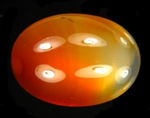 |
|
Karneol zweifarbig
Gewicht: 5,23 ct Herkunft: Madagaskar Foto mit freundlicher Erlaubnis von © www.thegemtrader.com |
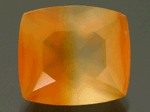 |
|
Chemische Formel Prasiolith: SiO2
Prásio, Prasioliet, Prasiolit, Prasiolite, Празиолит Mineralklasse: Oxide Kristallsystem: trigonal Mohs-Härte: 7 Dichte (g/cm3): 2,65 Refraktions-Index: 1,543 - 1,554 Farben: hellgrün, gelbgrün Fluoreszenz: - Pleochroismus: sehr schwach Größter Prasiolith: ? Fundorte: Brasilien, USA Name: eine Kombination der griechischen Wörter "prason" (Lauch) und "lithos" (Stein) |
|
Prasiolith
Gewicht: 2,08 ct Herkunft: Brasilien Foto mit freundlicher Erlaubnis von © www.online-edelstein.de |
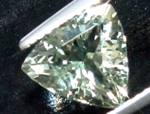 |
|
Prasiolith
Gewicht: 11,67 ct Herkunft: Brasilien Foto mit freundlicher Erlaubnis von © www.edelsteine.at |
 |
|
Prasiolith Ring
Prasiolith: 12,30 ct; 1,80 x 1,30 cm; Brasilien Diamanten: 54; total 0,25 ct Gold: 14K Gelbgold Foto mit freundlicher Erlaubnis von © www.africagems.com |
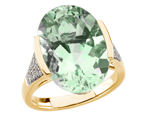 |
|
Prasiolith Anhänger
Prasiolit: 5,50 ct, 1,10 x 1,10 cm, Brasilien Material: 14K Gold und Sterlingsilber Foto mit freundlicher Erlaubnis von © www.africagems.com |
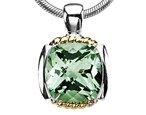 |
|
Prasiolith
Größe: 1,0 x 0,8 x 0,4 cm Gewicht: 2,05 ct Herkunft: Minas Gerais / Brasilien Foto mit freundlicher Erlaubnis von © http://lucianabarbosa.com |
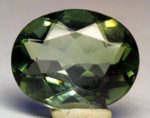 |
|
Prasiolith
Gewicht: 23,46 ct Herkunft: Brasilien Foto mit freundlicher Erlaubnis von © www.multicolour.com |
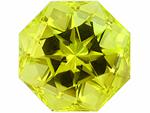 |
|
Prasiolith
Gewicht: 4,95 ct Herkunft: Minas Gerais / Brasilien Foto mit freundlicher Erlaubnis von © http://lucianabarbosa.com |
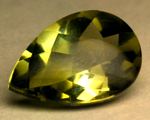 |
|
Quarz Mineral (blau)
Herkunft: Valle del Cauca Dep. / Kolumbien Foto mit freundlicher Erlaubnis von © www.minerals-online.de |
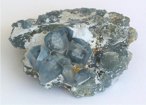 |
|
Quarz Mineral (Hämatit-Einschlüsse)
Größe: 5,23 x 3,95 x 2,72 cm Herkunft: Jinkouhe / Ebian / Leshan / Sichuan / China Foto mit freundlicher Erlaubnis von © www.mineralman.com |
 |
|
Quarz Mineral (Hämatit-Einschlüsse)
Größe: 12,4 x 7,1 x 4,8 cm Herkunft: Oranje Fluss / Namibia Foto mit freundlicher Erlaubnis von © www.irocks.com |
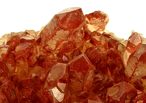 |
|
Quarz Mineral (Hämatit-Einschlüsse)
Größe: 5,0 x 4,7 x 2,7 cm Herkunft: Kasachstan Foto mit freundlicher Erlaubnis von © www.pegmatite.ru |
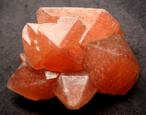 |
|
Quarz (Hämatit-Einschlüsse) "Sunset Quartz"
Größe: 0,65 x 0,56 cm Gewicht: 1,00 ct Herkunft: Brasilien Foto mit freundlicher Erlaubnis von © www.thegemtrader.com |
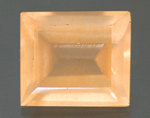 |
|
Quarz Mineral (Hämatit-Einschlüsse)
Größe: 21,9 x 18,4 x 10,4 cm Herkunft: Jinkouhe / Ebian / Leshan / Sichuan / China Foto mit freundlicher Erlaubnis von © www.irocks.com |
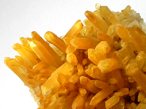 |
|
Quarz Mineral (Hämatit-Einschlüsse)
Größe: 16 x 10 x 6 cm Herkunft: Sils / Thusis / Domleschg / Graubünden / Schweiz Foto mit freundlicher Erlaubnis von © www.irocks.com |
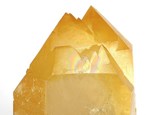 |
|
Quarz Mineral (Fuchsit-Einschlüsse)
Größe: 7 x 4 x 2,5 cm Herkunft: Chaprot Valley / Chalt / Gilgit-Baltistan / Pakistan Foto mit freundlicher Erlaubnis von © www.irocks.com |
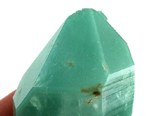 |
|
Quarz Mineral
Größe: 2,5 x 2 x 1,3 cm Herkunft: San Benito County / Kalifornien / USA Foto mit freundlicher Erlaubnis von © www.bandlminerals.com |
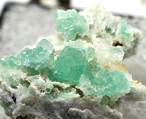 |
|
Quarz Mineral (Kohlenstoff-Einschlüsse)
Größe: 7 x 5 x 3 cm Herkunft: Monteriggioni / Siena Prov. / Toskana / Italien Foto mit freundlicher Erlaubnis von © www.webmineralshop.com |
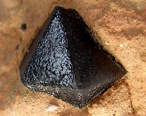 |
|
Quarz mit Covellit-Einschlüssen
Größe: 1,4 x 1,01 cm Gewicht: 6,52 ct Herkunft: Brasilien Foto mit freundlicher Erlaubnis von © www.thegemtrader.com |
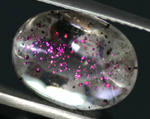 |
|
Quarz zweifarbig
Gewicht: 13,26 ct Herkunft: Namibia Foto mit freundlicher Erlaubnis von © www.irocks.com |
 |
|
Quarz zweifarbig
Gewicht: 16,55 ct Herkunft: Brasilien Foto mit freundlicher Erlaubnis von © www.thegemtrader.com |
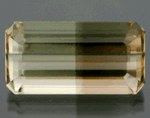 |
|
Quarz Stern
Größe: 1,1 x 1,1 x 0,6 cm Gewicht: 5,45 ct Herkunft: Minas Gerais / Brasilien Foto mit freundlicher Erlaubnis von © www.lucianabarbosa.com |
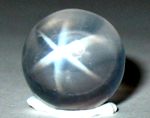 |
|
Quarz Stern
Gewicht: 156,74 ct Herkunft: Brasilien Foto mit freundlicher Erlaubnis von © www.online-edelstein.de |
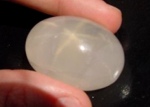 |
|
Quarz Multi-Stern
Größe: 1,37 x 1,28 cm Gewicht: 12,48 ct Herkunft: Sri Lanka Foto mit freundlicher Erlaubnis von © www.thegemtrader.com |
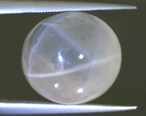 |
|
Quarz Mineral Trapiche
Größe: 1,89 x 1,58 x 0,54 cm Herkunft: Mogok Gebiet / Myanmar Foto mit freundlicher Erlaubnis von © www.crystal-treasure.com |
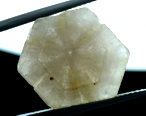 |
⇐ Intro Seite ⇐ Edelsteine
|
Chemische Formel Rauchquarz: SiO2
Dūmu kvarcs, Quartzo fumado, Rökkvarts, Rookkwarts, Savukvartsi, Smoky quartz, Záhněda, Dumanlı kuvars, Раухтопаз, 煙水晶, スモーキークォーツ Mineralklasse: Oxide Kristallsystem: trigonal Mohs-Härte: 7 Dichte (g/cm3): 2,65 Refraktions-Index: 1,543 - 1,554 Farben: braun bis schwarz, grau Fluoreszenz: - Pleochroismus: braun - rötlichbraun Größter Rauchquarz: ? Fundorte: weltweit |
|
Rauchquarz
Gewicht: 4,67 ct Herkunft: Brasilien Foto mit freundlicher Erlaubnis von © www.irocks.com |
 |
|
Rauchquarz
Größe: 2,41 x 1,90 cm Gewicht: 33,07 ct Herkunft: Ash Mountain Gebiet / bei Cassiar / British Columbia / Kanada Foto mit freundlicher Erlaubnis von © www.alpinegems.ca |
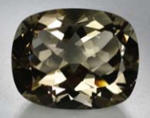 |
|
Rauchquarz Mineral
Größe: 9 x 8,5 x 4,5 cm Herkunft: Talefre / Aosta Tal / Italien Foto mit freundlicher Erlaubnis von © www.irocks.com |
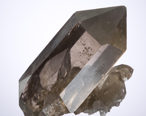 |
|
Rauchquarz
Größe: 2,52 x 1,75 cm Gewicht: 28,47 ct Foto mit freundlicher Erlaubnis von © www.rarestone.com |
 |
|
Rauchquarz Mineral
Größe: 5,0 x 2,4 x 2,0 cm Herkunft: Mt. Peterson / Halleluja Junction / Lassen County / Kalifornien / USA Foto mit freundlicher Erlaubnis von © www.earthstreas.com |
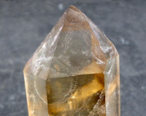 |
|
Rauchquarz Ring
Rauchquarz: 3,85 ct; 1,20 x 0,80 cm; Brasilien Diamanten: 4; total 0,02 ct Gold: 14K Gelbgold Foto mit freundlicher Erlaubnis von © www.africagems.com |
 |
|
Rauchquarz Mineral
Herkunft: Mount Ida / Hot Springs / Arkansas / USA Foto mit freundlicher Erlaubnis von © www.TreasureMountainMining.com |
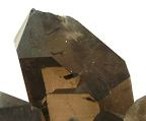 |
|
Rauchquarz Ring
Rauchquarz: 8,50 ct; 1,30 x 1,30 cm; Brasilien Diamanten: 12; total 0,05 ct Gold: 14K Gelbgold Foto mit freundlicher Erlaubnis von © www.africagems.com |
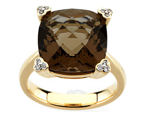 |
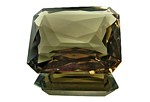 |
|
Rauchquarz Ring
Rauchquarz: 7,40 ct; 1,20 x 1,20 cm; Brasilien Diamanten: 2; total 0,08 ct Gold: 14K Weißgold und Gelbgold Foto mit freundlicher Erlaubnis von © www.africagems.com |
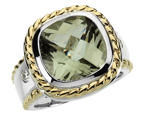 |
|
Rauchquarz Stern
Größe: 1,4 x 1,4 cm Gewicht: 14,67 ct Herkunft: Orange River / Nördliche Kap-Provinz / Südafrika Foto mit freundlicher Erlaubnis von © www.irocks.com |
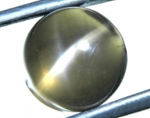 |
|
Rauchquarz Trapiche
Größe: 2,21 x 2,05 x 0,97 cm Gewicht: 34,48 ct Herkunft: Mogok Gebiet / Mandalay Division / Myanmar Foto mit freundlicher Erlaubnis von © www.crystal-treasure.com |
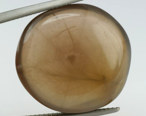 |
|
Chemische Formel Rosenquarz: SiO2
Kwarc różowy, Quartzo rosa, Rosenkvarts, Rose quartz, Rozenkwarts, Rózsakvarc, Rožu kvarcs, Ruženín, Růženín, ローズクォーツ, 玫瑰晶, רוז קוורץ Mineralklasse: Oxide Kristallsystem: trigonal Mohs-Härte: 7 Dichte (g/cm3): 2,65 Refraktions-Index: 1,543 - 1,554 Farben: rosa Fluoreszenz: schwach dunkelviolett Pleochroismus: schwach: rosa - hellrosa Größter Rosenquarz: ? Fundorte: Brasilien, Madagaskar |
|
Rosenquarz
Größe: 1,11 x 0,94 cm Gewicht: 2,92 ct Herkunft: Brasilien Foto mit freundlicher Erlaubnis von www.irocks.com |
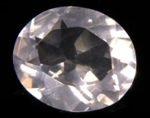 |
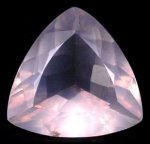 |
|
Rosenquarz Mineral
Herkunft: Alto da Pitora / Galiléia / Minas Gerais / Brasilien Foto mit freundlicher Erlaubnis von © www.exceptionalminerals.com |
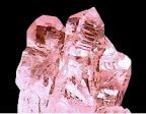 |
|
Rosenquarz
Herkunft: Madagaskar Gewicht: 20,53 ct Foto mit freundlicher Erlaubnis von www.gemfrance.com |
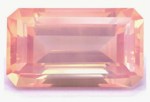 |
|
Rosenquarz
Gewicht: 26,25 ct Herkunft: Galiléia / Minas Gerais / Brasilien Foto mit freundlicher Erlaubnis von © http://lucianabarbosa.com |
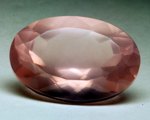 |
|
Rosenquarz
Gewicht: 61,11 ct Herkunft: Adams Peak / Sri Lanka Foto mit freundlicher Erlaubnis von www.wildfishgems.com |
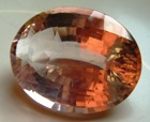 |
|
Rosenquarz Stern
Gewicht: 27,42 ct Herkunft: Mogok Gebiet / Mandalay / Myanmar Foto mit freundlicher Erlaubnis von www.crystal-treasure.com |
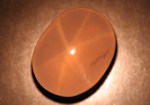 |
|
Rosenquarz Stern
Gewicht: 301,53 ct Herkunft: Brasilien Foto mit freundlicher Erlaubnis von www.online-edelstein.de |
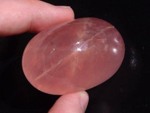 |
|
Rosenquarz Stern
Größe: 5,12 x 4,12 x 4,11 cm Gewicht: 641,95 ct Herkunft: Südafrika Foto mit freundlicher Erlaubnis von www.gemselect.com |
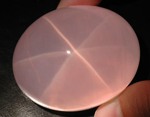 |
|
Rosenquarz Stern
Größe: 2,55 x 1,88 cm Gewicht: 77,36 ct Herkunft: Brasilien Foto mit freundlicher Erlaubnis von www.djraregems.com |
 |
|
Chemische Formel Tigerauge: SiO2
Kwarcowe tygrysie oko, Ochi de tigru, Œil de Tigre, Ojo de tigre, Olho de tigre, Tiger's eye, Tigeröga, Tigrie oko, Tigrisszem, Tigrovo oko, Tiikerinsilmä, Tijgeroog, タイガーズアイ, หินตาเสือ, 虎眼石, עין הנמר Mineralklasse: Oxide Kristallsystem: trigonal Mohs-Härte: 7 Dichte (g/cm3): 2,6 - 2,7 Refraktions-Index: 1,534 - 1,540 Farben: goldgelb - bräunlich Fluoreszenz: - Pleochroismus: - Größtes Tigerauge: ? Fundorte: Australien, China, Namibia, Südafrika, USA |
|
Tigerauge Mineral
Herkunft: Nördliche Kap-Provinz / Südafrika Foto mit freundlicher Erlaubnis von © António Manuel Ináçio Martins |
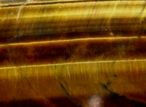 |
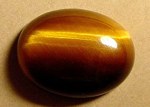 |
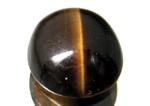 |
|
Tigerauge
Größe: 1,62 x 1,17 cm Gewicht: 11,31 ct Herkunft: Nördliche Kap-Provinz / Südafrika Foto mit freundlicher Erlaubnis von www.irocks.com |
 |
|
Tigerauge Mineral Var. "Marra Mamba"
Herkunft: Mt. Brockman / Hamersley Ranges / Pilbara Region / West Australien / Australien Foto mit freundlicher Erlaubnis von © http://topgems.homestead.com |
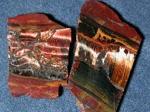 |
|
Tigerauge Var. "Marra Mamba"
Gewicht: 70,6 ct Größe: 2,3 x 5,5 x 0,6 cm Herkunft: Mt. Brockman / Hamersley Ranges / Pilbara Region / West Australien / Australien Foto mit freundlicher Erlaubnis von © http://topgems.homestead.com |
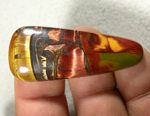 |
|
Tigerauge Var. "Marra Mamba"
Gewicht: 44,2 ct Größe: 2,5 x 4,3 x 0,6 cm Herkunft: Mt. Brockman / Hamersley Ranges / Pilbara Region / West Australien / Australien Foto mit freundlicher Erlaubnis von © http://topgems.homestead.com |
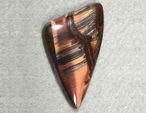 |
|
Tigerauge Var. "Pietersit"
Gewicht: 17,32 ct Größe: 3,41 x 1,65 x 0,43 cm Herkunft: Südafrika Foto mit freundlicher Erlaubnis von www.djraregems.com |
 |
|
Tigerauge Var. "Pietersit"
Größe: 2,5 x 1,8 cm Herkunft: Namibia Foto mit freundlicher Erlaubnis von www.edelsteine.at |
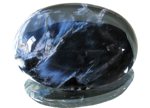 |
|
Tigerauge Var. "Pietersit"
Größe: 4,0 x 3,0 cm Herkunft: Namibia Foto mit freundlicher Erlaubnis von www.edelsteine.at |
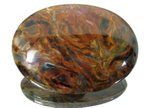 |
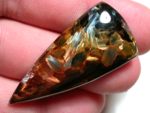 |
⇐ Intro Seite ⇐ Edelsteine